When daylight fades, the world transforms into a realm of shadows, whispers, and movement. For many creatures, this is the hour of opportunity—a time to hunt, explore, and thrive under the cover of darkness. These nocturnal predators are masters of stealth, equipped with heightened senses and cunning strategies that let them own the night. From the whispering treetops to the ocean’s hidden depths, these silent hunters reveal nature’s ingenuity in adapting to the dark. Let’s meet 12 extraordinary creatures who dominate the night and uncover what makes each one a marvel of evolution.
1. Bengal Tiger

The Bengal tiger, one of the most powerful predators in the world, often hunts under the cover of night to avoid the scorching heat of its native regions. With its incredible night vision, this apex predator silently stalks prey such as deer, wild boar, and even larger animals like gaur. Its striped coat provides camouflage in dense vegetation, while its immense strength allows it to take down prey with a single powerful pounce. Bengal tigers are highly territorial and can attack humans if threatened or provoked, making them one of the most dangerous nocturnal hunters in the wild.
2. Fossa
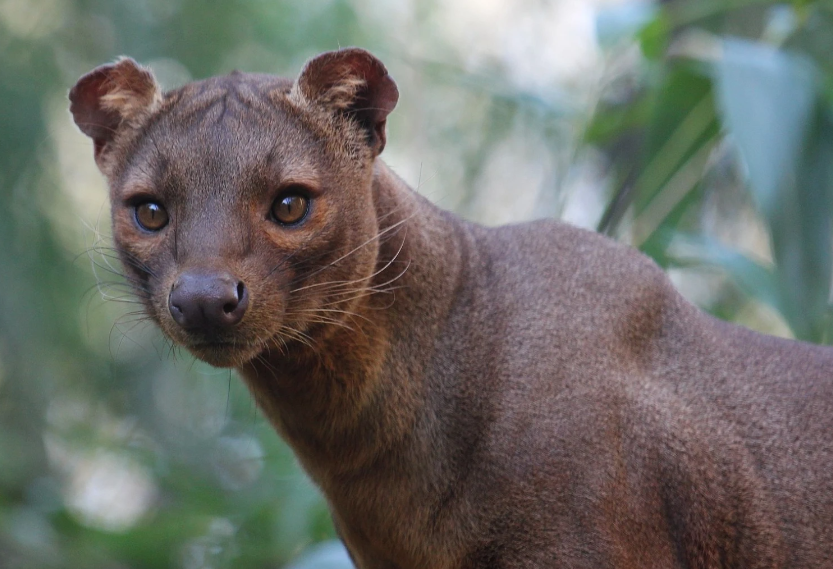
Animalia
The fossa is Madagascar’s apex predator, a sleek and agile carnivore that blends the traits of a cat and a mongoose. This nocturnal hunter preys primarily on lemurs, stalking them with incredible stealth and striking with precision. Its long tail aids in balance, allowing it to navigate trees effortlessly in pursuit of its prey. Semi-retractable claws and sharp teeth give it an edge when ambushing its targets. Though elusive and rarely seen, the fossa plays a vital role in maintaining Madagascar’s delicate ecological balance. Its adaptability and silent hunting skills make it one of the island’s most dangerous predators.
3. Indian Star-Tailed Scorpion
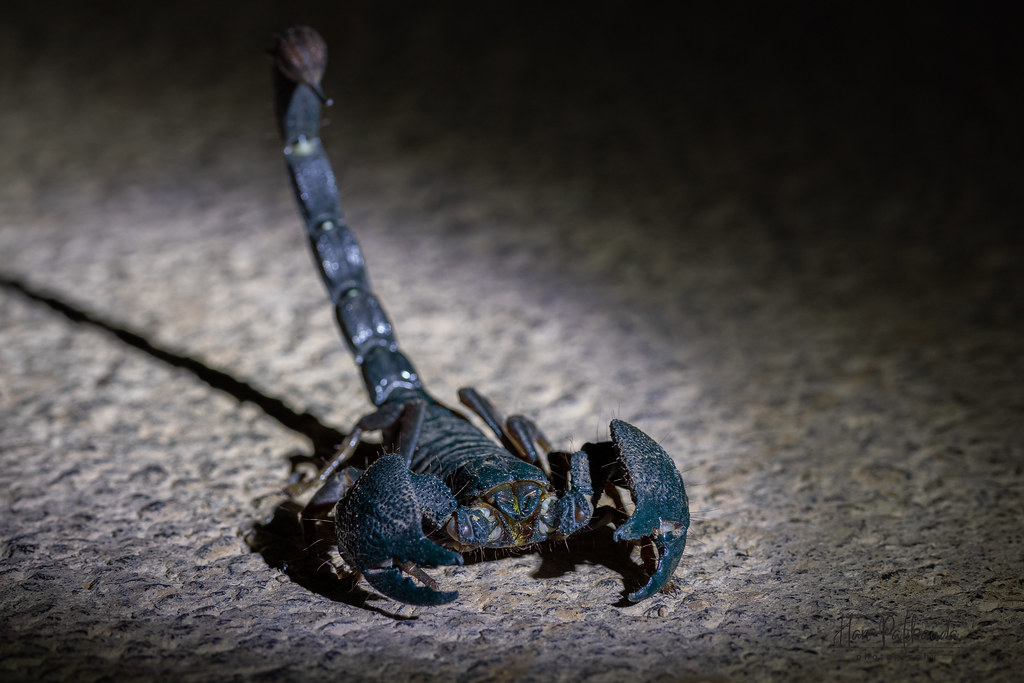
Flickr
Imagine creeping through the arid landscapes of India and spotting a creature glowing faintly under UV light—that’s the Indian star-tailed scorpion. This nocturnal arachnid uses the cloak of night to hunt insects, relying on specialized hairs that pick up ground vibrations. Its strikes are fast and precise, a testament to its evolutionary fine-tuning. While its venom isn’t fatal to humans, its stealthy hunting style makes it a top predator in its environment. Scientists are still unraveling the mystery of its fluorescence, adding a layer of intrigue to this already fascinating creature of the night.
4. Pacman Frog
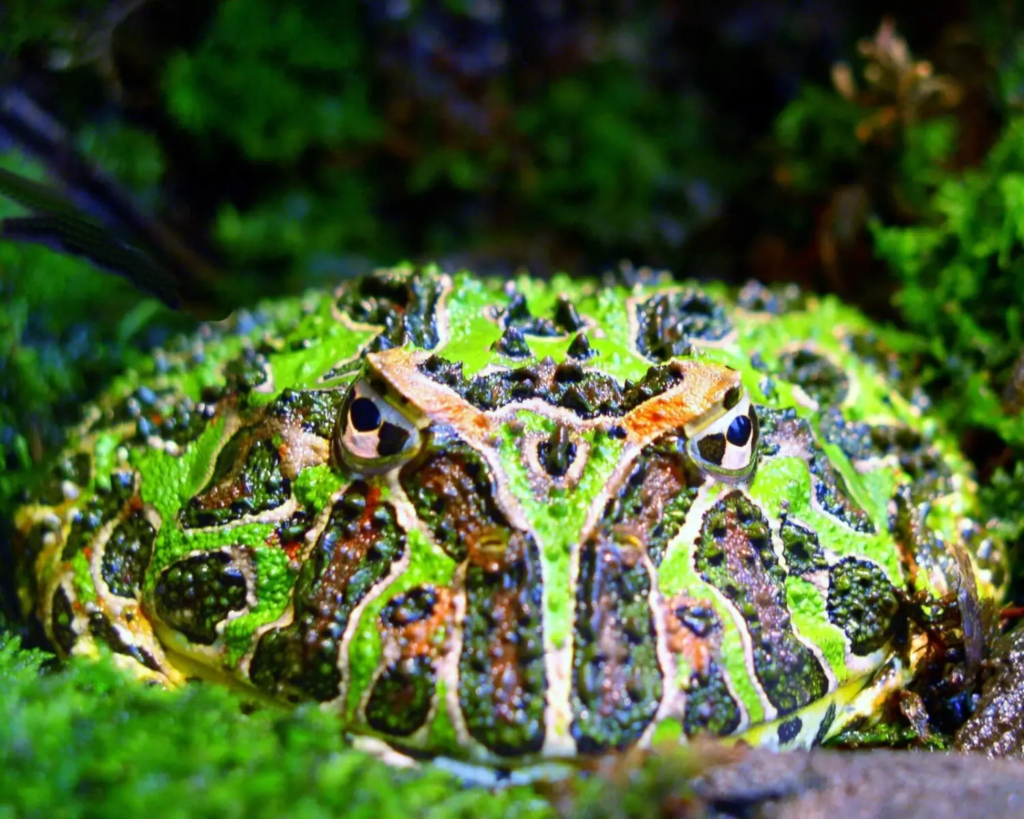
Animalia.bio
The Pacman frog, named for its round shape and insatiable appetite, might look like a chubby cartoon character, but it’s a predator to be reckoned with. This South American ambush hunter spends its days buried in leaf litter, emerging at night to gulp down anything that gets too close. From insects to small mammals, even other frogs, the Pacman frog’s wide mouth and powerful bite make short work of its prey. Watching one in action is mesmerizing—its hunting style is a mix of patience and explosive power. Despite its amusing appearance, it’s all business when the sun goes down.
5. Fishing Cat
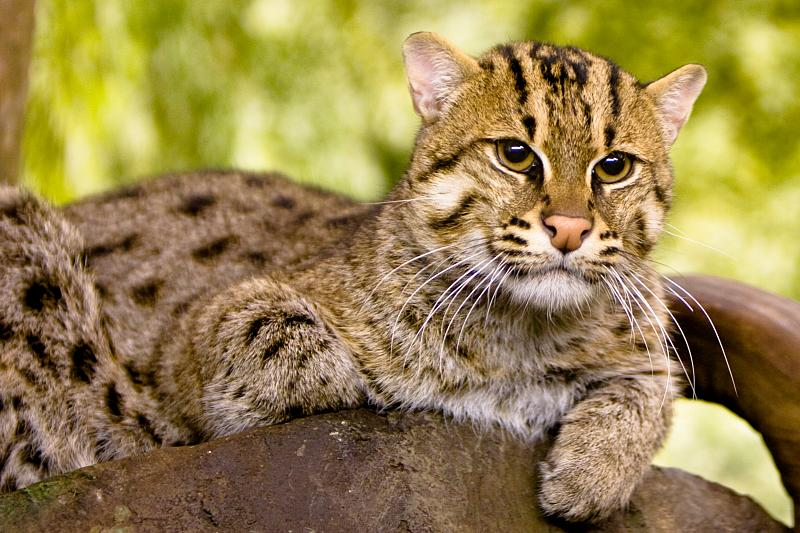
Flickr
Forget what you know about cats disliking water—the fishing cat is here to rewrite the rulebook. This nocturnal feline from South and Southeast Asia thrives in wetlands, where it prowls rivers and swamps for fish, frogs, and crustaceans. With partially webbed paws and sharp claws, it’s an adept swimmer, gliding through the water with stealth and precision. Its large, luminous eyes help it detect movement in the dark, making it a formidable predator in aquatic environments. The fishing cat’s unique adaptations are a reminder that nature doesn’t follow stereotypes—it creates them.
6. Black Panther

Wikimedia Commons
The black panther, a melanistic variant of leopards or jaguars, is an iconic nocturnal predator. Its dark coat allows it to blend seamlessly into the shadows, making it nearly invisible at night. Found in dense forests and jungles, it hunts deer, monkeys, and other medium-sized animals, relying on its silent movements and powerful leaps to ambush prey. Black panthers are territorial and can be highly aggressive if provoked. Their ability to stalk and kill with precision in low light conditions makes them one of the most fearsome predators to encounter after dark.
7. Giant Asian Hornet
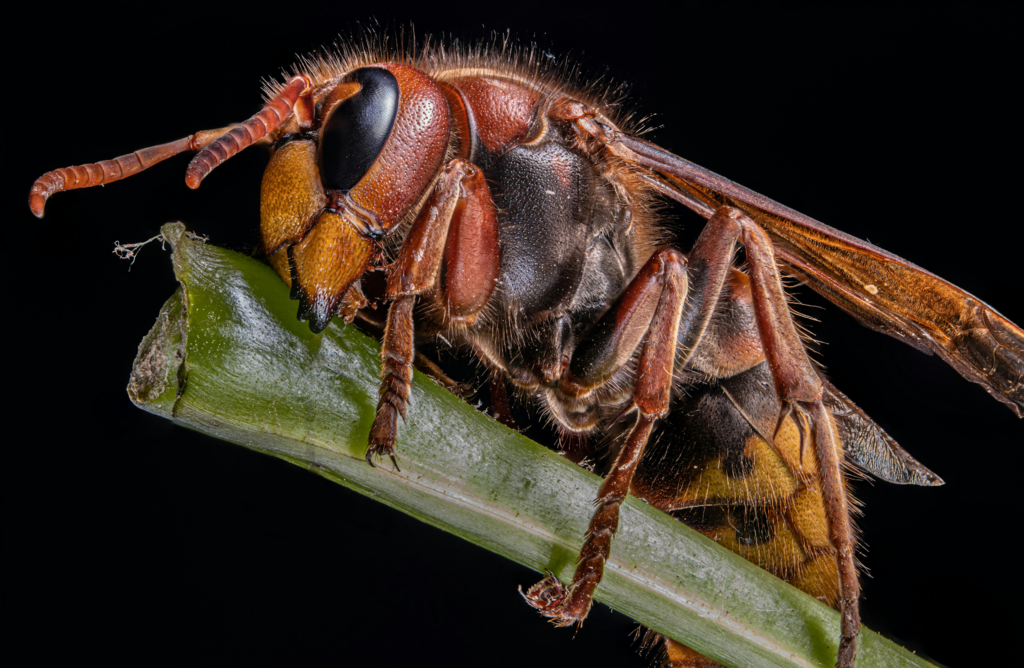
Pexels
The giant Asian hornet, often called the “murder hornet,” is a fearsome nocturnal hunter that wreaks havoc on bee colonies. These massive insects use their sharp mandibles and coordinated teamwork to invade hives under the cover of darkness, decimating colonies with ruthless efficiency. They carry off bee larvae to feed their own young, leaving destruction in their wake. While their reputation may seem sinister, they are an integral part of their ecosystems, controlling insect populations. Still, encountering one of these stealthy predators is enough to send a shiver down anyone’s spine.
8. Vampire Bat

Animalia.bio
If any animal could embody the dark romance of the night, it’s the vampire bat. These Central and South American creatures live up to their name, feeding on the blood of warm-blooded animals. But they aren’t as menacing as they sound. Their razor-sharp teeth create tiny cuts, and their saliva contains an anticoagulant that keeps blood flowing, often without the victim even noticing. Beyond their eerie feeding habits, vampire bats are fascinating social animals, known for sharing food with hungry colony members. Their ability to navigate the night using echolocation and thermal sensors adds to their mystique as creatures of the dark.
9. Tasmanian Devil
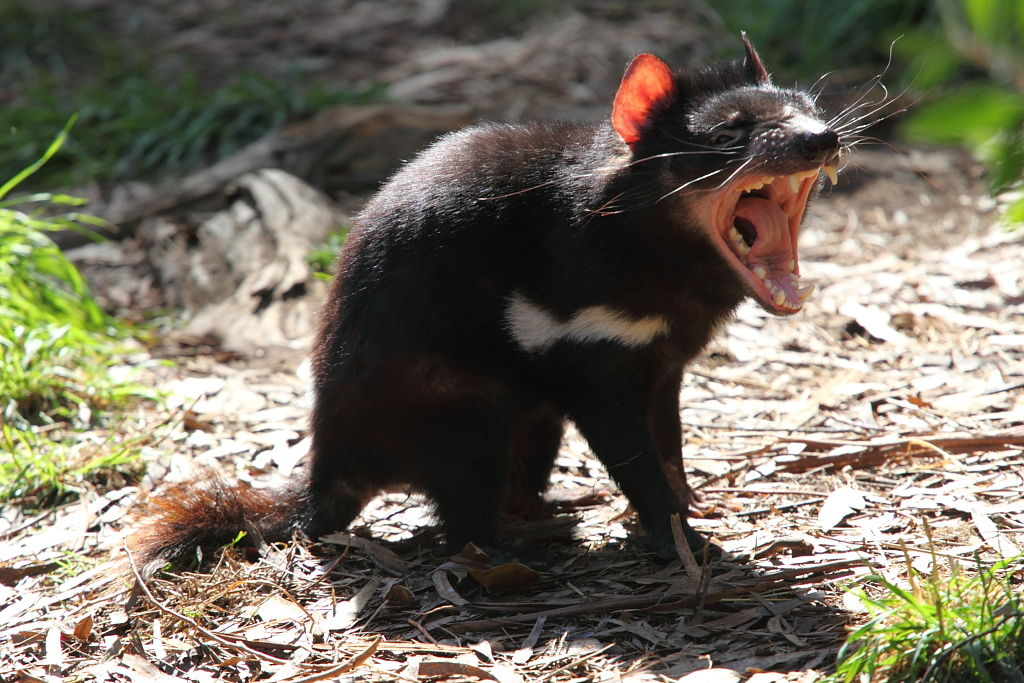
Flickr
Despite its small size, the Tasmanian devil has a ferocity that earns it its devilish name. Native to the island of Tasmania, these nocturnal marsupials scavenge and hunt under the cover of darkness, using their bone-crushing jaws to devour prey entirely. Their sharp senses allow them to locate carcasses from far away, making them vital scavengers in their ecosystem. They’ve also been known to let out spine-chilling screams during nighttime disputes, adding an eerie layer to their already fearsome reputation. Though fierce, Tasmanian devils are highly social creatures, often gathering in groups to feed. They are a fascinating mix of ferocity and teamwork.
10. Owl-Faced Monkey
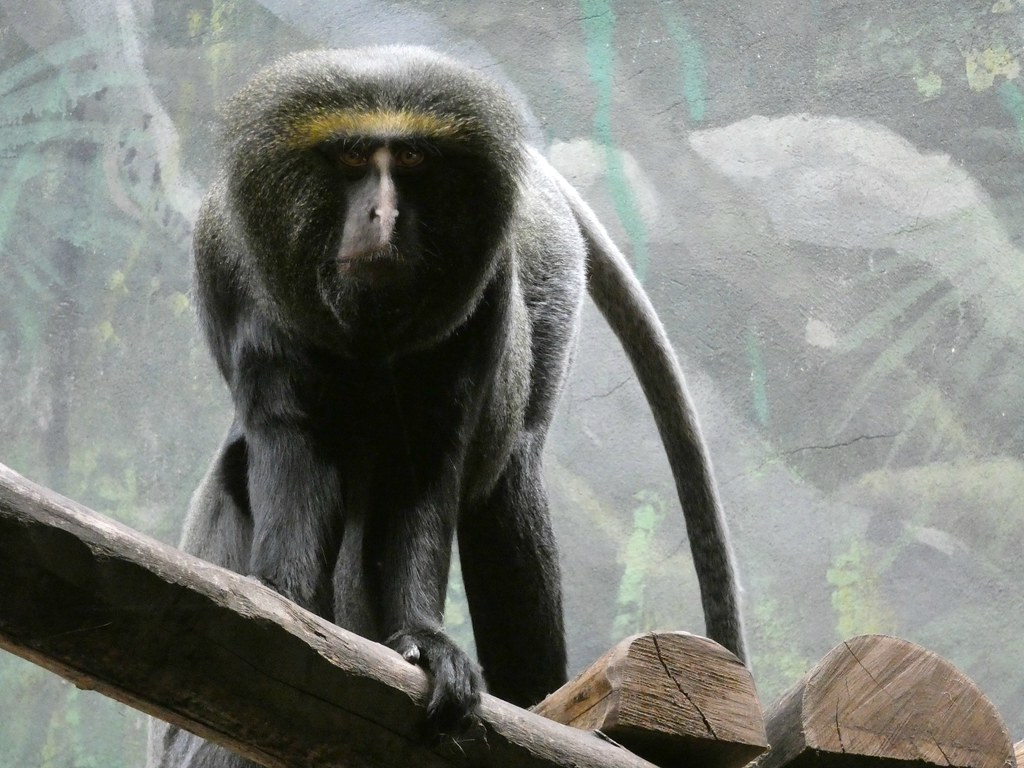
Flickr
The owl-faced monkey, also called the hamlyn’s monkey, is one of the rainforest’s most secretive residents. Found in Central Africa, it gets its name from its striking facial markings that resemble an owl. This elusive nocturnal primate uses its large eyes and sharp hearing to navigate the dark, dense jungle. While it primarily feeds on fruits, it occasionally supplements its diet with insects and small animals. Its shy nature makes it a rare sight, even for researchers, but its quiet life contributes significantly to the health of its forest home. Encountering an owl-faced monkey would feel like stumbling upon a hidden treasure.
11. Golden Lancehead Viper
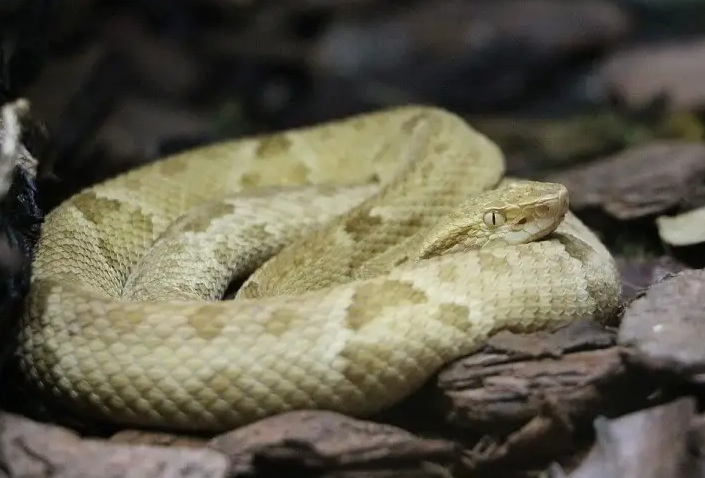
Animalia
Endemic to Brazil’s Snake Island, the golden lancehead viper is a highly venomous nocturnal predator. Its potent venom causes rapid tissue destruction, paralysis, and, in some cases, death. At night, this snake actively hunts birds and small mammals, using its camouflage to remain undetected. Despite its isolated habitat, its danger to humans is legendary due to its lethal venom and aggressive nature. With no natural predators on the island, the golden lancehead has adapted to become an efficient and deadly nocturnal hunter, making it one of the most dangerous snakes on the planet.
12. Leopard
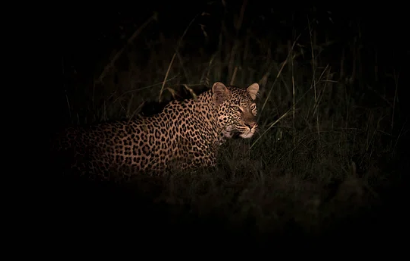
Rawpixel
The leopard is the epitome of grace and power, and it truly comes alive when the sun goes down. Found in Africa and parts of Asia, this big cat is a master of stealth. Its spotted coat helps it melt into the shadows, and its sharp senses allow it to track prey with precision. Leopards are also incredible climbers, often dragging their kills up into trees to avoid scavengers. Watching a leopard on the prowl is mesmerizing—it’s a mix of calculated patience and explosive strength. As one of nature’s most adaptable predators, the leopard reminds us of the raw beauty and power of the wild.


